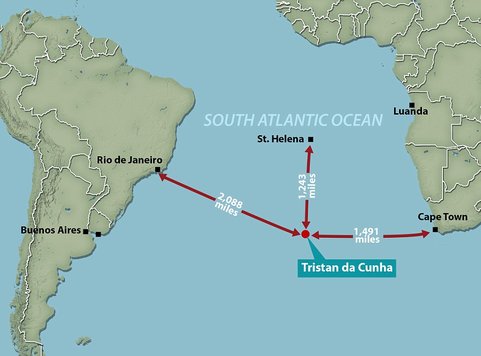Position requires a two-year commitment
By Diego Flammini
Assistant Editor, North American Content
Farms.com
The world’s remotest island has a job opening and is looking for a farmer to fill the position for at least two years.
“Tristan da Cunha is a small isolated island in the South Atlantic and is currently seeking an Agricultural Adviser to assist with all aspects of the development of livestock and agriculture,” the job posting reads.
As the Agricultural Adviser, the employee would be responsible for 1,000 acres of “poor grazing land” that 300 cattle and 500 sheep call home. The community currently produces potatoes but is hoping to increase its production in fruits, vegetables and other crops in an attempt to reduce imports.

Other responsibilities include:
- Medicating livestock
- Arable crop rotation
- Orchard creation, management and development
- Tending to legumes in greenhouses
- Livestock maintenance (beef/dairy/sheep) and general animal husbandry
- Training other agriculture staff
Employment perks include free accommodation and travel. Salary is negotiable depending on experience and qualifications.
Interested farmers are encouraged to submit a CV and 250 word paper explaining their qualifications for the position by Feb. 12.
About Tristan da Cunha
- Island area is 207 square kilometres or 79 square miles
- Population: 260 people
- Island is only accessible by sea and for only about 60 days each year
- Closest land neighbour is Cape Town, South Africa – more than 1,000 miles away and takes approximately seven days by sea to get there
- The island is home to one village, Edinburgh of the Seven Seas
- The island had a golf course that doubles as a pasture for cattle
For people who are interested in working in the agriculture or food fields and being a little closer to home, AgCareers and Careers in Food can provide access to local employers with open positions.